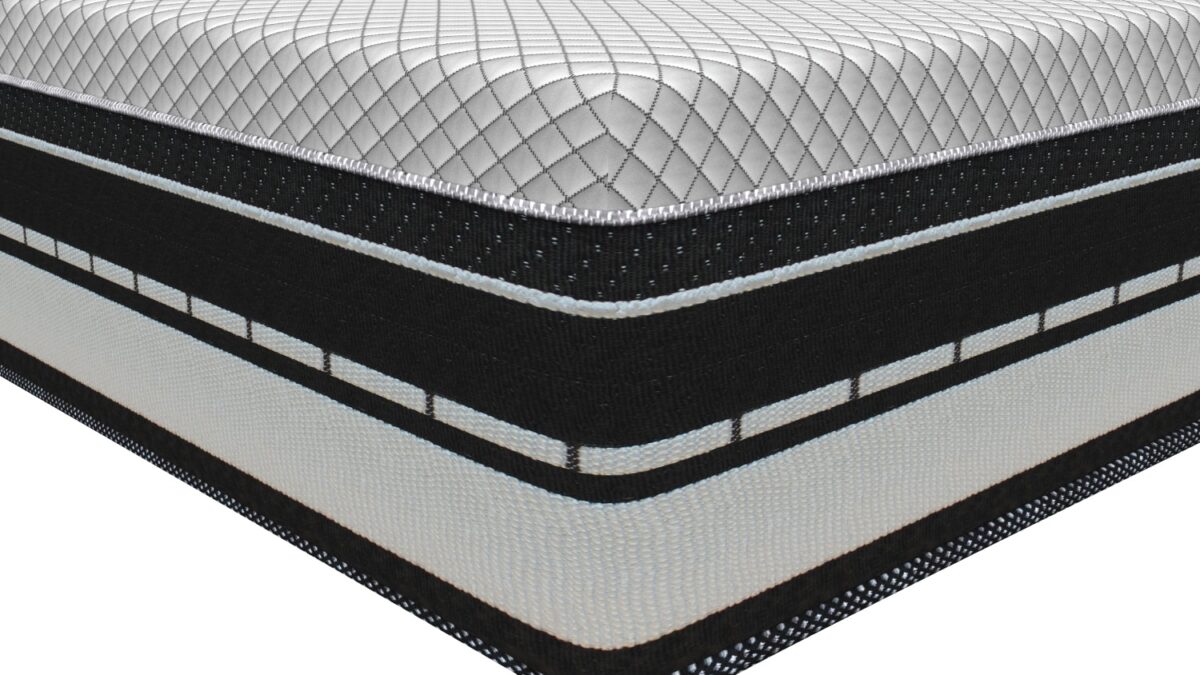Getting a good night’s sleep may be the most important thing you can do for your health, productivity, and well-being. Unfortunately, most of us are cheap out on mattresses! But you don’t have to spend $3000 on a mattress to get a great night’s sleep.
The key is to find the mattress that suits you best, and for that, you need to know what options are out there. Here is a quick guide to the most common types of mattresses you can find in your local mattress store.
Memory Foam Mattresses: Memory foam mattresses are popular because they contour your body and relieve pressure points better than other mattresses.
Innerspring Mattresses: Innerspring mattresses are still the most popular type of mattress sold today, but they’re not all created equal.
Latex Mattresses: Latex mattresses provide excellent support and comfort thanks to their natural, highly elastic material composition.
Pillow Top Mattresses: Pillow top mattresses are ones with an additional soft layer on top of the main mattress, usually made of memory foam or latex.
Factors to Consider Before Choosing a Suitable Mattress
If you are about to buy a new mattress for your bed, then you might be surprised to know that buying a mattress is not as simple as it may seem. Many factors need to be considered to ensure that you get the best possible mattress for your sleeping style and needs.
1. How do you sleep?
Over 85% of people sleep on their side, and if you’re one of them, it is important to choose a mattress that will support your pressure points and align your spine. If you sleep on your back, it’s important that your lower back is supported and protected from sagging. If you have a partner, both of these factors are even more important because they can affect their comfort while they sleep too.
2. Will there be any movement in the night?
If you have an active sleeper who often tosses and turns around in bed at night, this could be an issue with an innerspring or foam mattress because they don’t offer much movement isolation.
This can also make it difficult for light sleepers who wake up easily when there is too much disturbance in their surroundings. In this case, you might want to choose a memory foam mattress where the movements of one person won’t affect your night sleep.
3. Comfort
Comfort is what matters most when it comes to mattresses. A comfortable mattress is critical to getting a good night’s sleep. The complexity of choosing a comfortable mattress stem from the fact that comfort is subjective. Each person has their own preferences for comfort levels and support.
For example, some people prefer firm mattresses, while others prefer softer ones. Some people like sleeping on their sides, while others prefer sleeping on their backs or stomachs. Some people are susceptible to temperature while sleeping; they tend to overheat during the night and need more airflow in their mattresses.
4. Strength
Strength is not a factor that most people consider when buying a mattress, but it should be. After all, you’re going to be sleeping on this thing every night until it wears out! And if you don’t get something strong enough, it will wear out prematurely.
There are three different ways in which a bed can lose strength. First and most obviously, the fibers in the mattress can break. Second, the foam can compress so much that the springs start pushing through; this is what happens to cheap mattresses after a year or two of use. Third, and most dangerously, the glue holding the springs together can fail.
This happens because what looks like one piece of foam is actually many pieces glued into layers, and if those layers come apart and mix in the middle of the spring unit while you’re asleep, the springs go rogue and start stabbing you in random places. At that point, it’s advisable to shop for a new mattress.
5. Cost
Cost is an important feature to consider when shopping for the best mattress for your home. Mattresses come in a range of prices, and some are more expensive than others depending on the size and the materials they compose. Make sure that you choose one that fits your budget and offers all the features you want in a bed.
6. Size
You should consider the size because there are mattresses available in several sizes, including twin, full, queen, and king sizes, so choose one based on how much space you have available and who will be sleeping in it at night.
7. Durability
Mattresses last longer than others, and some may be of better quality than others as well, so it may be helpful to ask about the warranty for the mattress before making a purchase decision so that you know what to expect from this item once it arrives at your home.
8. Mattress size
The size of the mattress depends on whether you are buying a single or double bed. You can also choose between innerspring and memory foam mattresses. Innerspring mattresses are good at supporting your body but make noise when you move. Memory foam mattresses are quiet but are expensive compared to innerspring mattresses.
9. Type of padding used on the mattress
Depending on its thickness, a good mattress should have between two and five layers of padding. Depending on your need, you can choose between cotton, wool, or latex-filled padding on your mattress.
10. The firmness level of the mattress
A firm mattress will be good for your back, but it will not be comfortable for sleeping if it’s too hard. However, if it’s soft, it may not give you enough support for your back and neck to reduce pain when sleeping, especially if you have back problems.
Key Takeaway
If you’re looking to buy a new mattress, spend some time researching your options. Check out reviews online, but don’t rely on them alone; test out the mattress in person, and make sure you can return or exchange it if it turns out to be uncomfortable. Also, make sure you buy directly from the manufacturer or retailer; as a general rule of thumb, the fewer mediators between manufacturers and consumers, the better.
If you can’t afford to buy a new mattress right now, some temporary fixes may help. Try changing your pillow or using an egg crate foam topper on top of your current mattress. If those don’t help, consider buying a whole new bed set-up: box spring, metal frame, headboard (if needed), and all.
Related posts

Recent Posts
- The Future of Automotive in the UK: Trends Driving Industry Evolution April 23, 2024
- The Future of Rummy: Trends and Predictions April 16, 2024
- 6 Questions to Ask Your Hardwood Flooring Installer March 28, 2024
- Inside Rinat Akhmetov Foundation’s Blogger Camp for Ukraine’s Young War Survivors February 29, 2024
- Driving Success: Exploring the Benefits of Golf Simulators for Businesses February 23, 2024
- UNLOCKING EFFICIENCY: YOUR GUIDE TO INDUSTRIAL EQUIPMENT MAINTENANCE November 8, 2023
- SELECTING THE RIGHT PUMP MATERIAL: FINDING THE PERFECT FIT FOR YOUR APPLICATION October 27, 2023



Stay connected